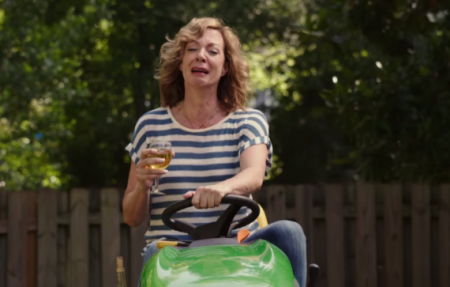Today the teen high school movie made a welcome return in the form of The DUFF, adapted from the YA novel of the same name by teen author Kody Keplinger.
In summary The DUFF shares character archetypes, themes, and set-pieces with that pinnacle of teen movies, Mark Waters’ Mean Girls. The premise sees high school senior Bianca (Mae Whitman) informed by childhood friend Wesley that she’s the “Designated Ugly Fat Friend”, or “DUFF”, among her friends. The filmmakers attempt to dodge potential body image-related backlash by having Wesley (Robbie Amell) repeatedly explain that the DUFF doesn’t actually have to be ugly or fat; they are simply the less attractive thus more approachable gatekeeper to a single-sex friendship group. With Bianca serving as the Cady-like relatable paradigm on the fringes of the elite, the film uses its eponymous concept as the catalyst for interrogating cliques, labels, rumours and female rivalry, once again concluding with an inescapable rite of passage – the high school dance.
Although there’s no ingenious show of originality here, I don’t mean to overstate the Mean Girls connection; it’s simply a generic touchstone The DUFF’s creative team are clearly aware of. Screenwriter Josh A. Cagan (Bandslam) even slots in a few direct but pleasingly subtle references. For instance, having been cut from the heroic-jock-but-below-average-student mould, it’s Wesley who’s gifted a reprise of Gretchen Weiners’ infamous coinage “irregardless”.
An alum of TV’s Arrested Development and In Treatment, Mae Whitman makes Bianca into a likeable and highly watchable lead. She resembles a young Sophia Bush, and her performance approaches the quality of Bush’s work on One Tree Hill, at least in terms of provoking audience empathy. And just like Bush, she can also bring the comedy.
Refreshingly, the film includes female characters who are actually nice to each other, Bianca’s best friends Casey and Jess. Aside from this their characterisation rivals the Bratz movie for 1-dimensionality; Skyler Samuels’ Jess is defined by her love of fashion, whereas Casey (Bianca A. Santos) is “the sassy one”.
Although the script provides plenty of laughs, many thanks to Amell and a cracking cameo from Allison Janney, The DUFF harbours a cringe-inducing fixation with citing social media. One scene in particular is littered with namedrops including Facebook, Twitter, Instagram and even Vine. Despite its basis on a novel by an actual 17 year-old, I remain unconvinced that anyone refers to a retweet as an “RT”.
The DUFF‘s premise translates well to the screen, but its narrative trajectory is, unsurprisingly, incredibly predictable. This is no great sin, for the genre of the high school movie is one of motifs and caricatures. More of a weakness, though, is its all-to-apparent formal debt to Will Gluck’s Easy A. Specific uses of protagonist voiceover and fast-forward time-lapse are surely too similar to be merely coincidence or down to generic trait.
In spite of all this The DUFF was lapped up by the young audience who packed out Oxford’s Phoenix Picturehouse for an E4 Slackers Club preview earlier this week, and deservedly so. It’s enormously enjoyable, and after a relative drought is arguably the best high school film to be released since Gluck’s Easy A in 2010.




